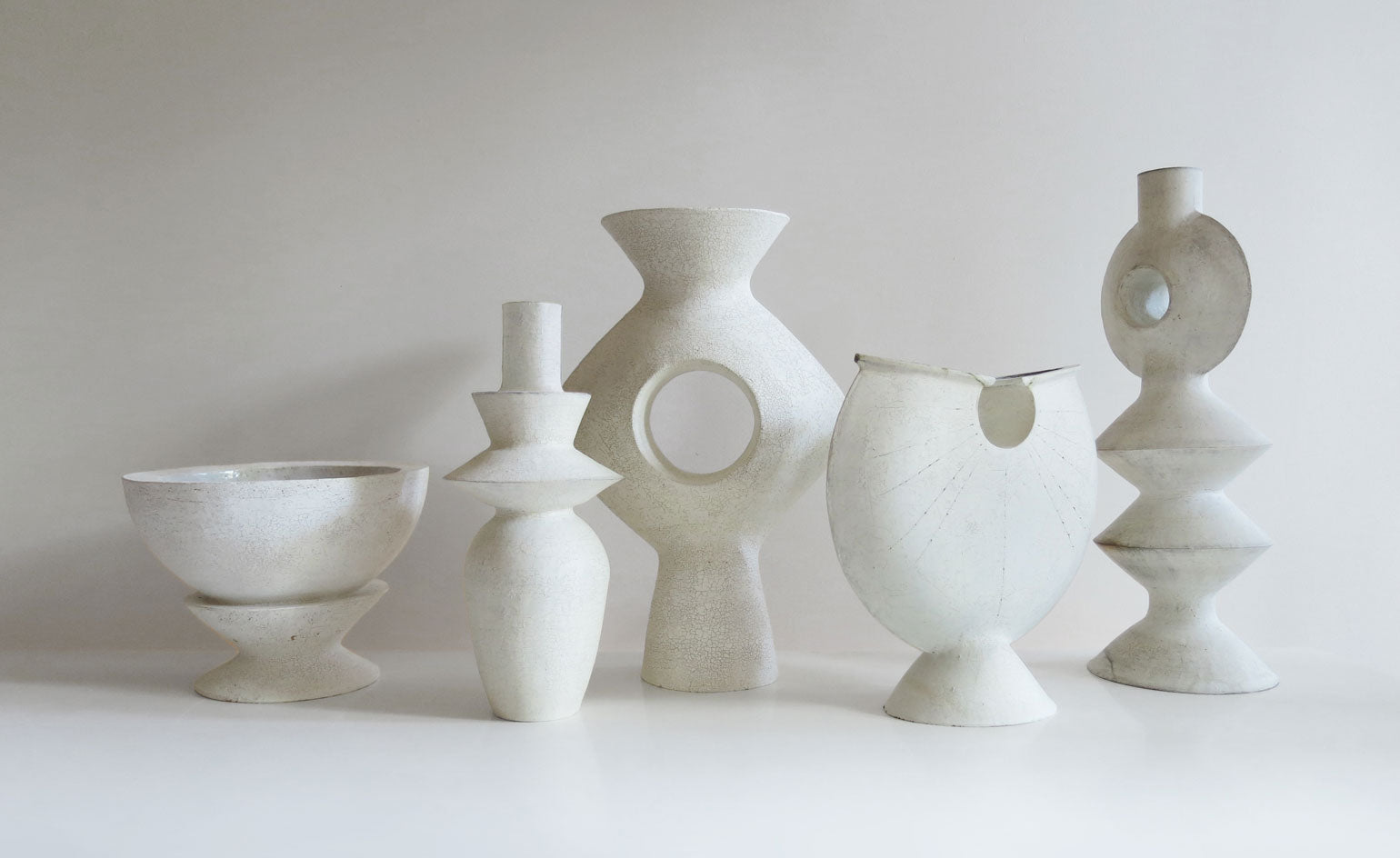John Born

Humble Matter

We love your development of geometric shapes. It brings to mind cubist ancient greece with BauHaus influence. How would you define your style?
I generally define my style as a blend of the ancient and the modern. (Although, honestly, the ancient and the modern are really not all that different!) I try to look at as many different things as possible but not too closely and not for too long. I just want my subconscious to soak up all these different influences and images--from the ancient to the African to modernist sculpture to cutting edge design across art and architecture and objects--and let them marinate there. And then as I look at or think about the objects I use as molds to create each piece, I'll dredge something up from that subconscious soup to base a piece on. However, I will also go through periods where I am definitely obsessed with one artist in particular. Recently, it's been Alberto Giacometti's surrealist works, which of course owe a lot to ancient works, as well as African masks and ritual objects. So, in some way, everything ends up being connected.
What techniques do you use when developing your objects?
My first teacher at Greenwich House Pottery Helena Starcevic said, “Always start with a drawing.” So, that’s what I do. It allows me to explore a lot of different versions before deciding which will work best. It also gives me a target—I know what I’m aiming to do. About 90% of the time, the transition from 2-D to 3-D is successful. (Every once-in-awhile, something that seemed like a good idea in a drawing looks terrible in clay. Then it gets thrown out!)

Based on the drawing, I pick out the shapes I need to make the piece. I use very basic objects as press molds. Things you can buy at any department store. A set of plastic nesting bowls from Target. A tumbler from Crate and Barrel. A plate from IKEA. I used to be obsessed with expanding my inventory until I realized I was using the same 8 things over and over. I roll out slabs and then press them into the objects. Once they’re about leather hard, I score and slip them together, section by section. From a ceramics standpoint, it’s very basic. (Honestly, I probably don’t have enough knowledge to call myself a “ceramicist”.) I have a system that works for me, and I follow it. I always tell people that if I can do this, you can too.


Have you ever experimented with the implementation of other materials?
I haven't explored a lot of other materials since dedicating myself full-time to ceramics. I am currently working on a lamp project that incorporates a hand-blown glass shade that was made for me by glass artist William Couig.

Do you consider your work product design or sculpturing?
I think one of the best things about design is that much of it now seems to be escaping these very structured definitions we've tried to impose on it. I firmly believe that design is just as beautiful, meaningful, "important" (and often more so) than sculpture. That said, because my background happens to be in sculpture, I feel like I generally approach making pieces as sculptures. I used to just make pieces, without considering what I would do if I had to make them repeatedly. Now, however, since some pieces have turned out to be quite popular and get reproduced more often, I've had to take more of a design approach, where I carefully consider how difficult a piece will be to make repeatedly. So, for some newer designs, it's not just about how they look but also how they're made. For me, my work kind of fits between the two--it's always sculpture, but sometimes it's a little more design-oriented.





Dejar un comentario